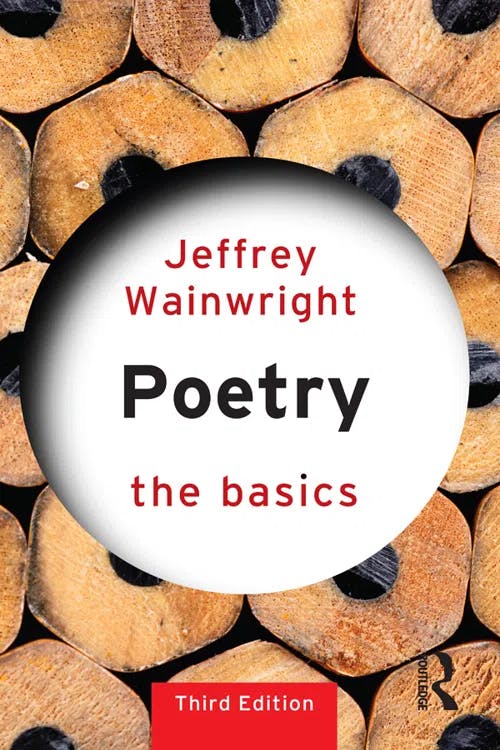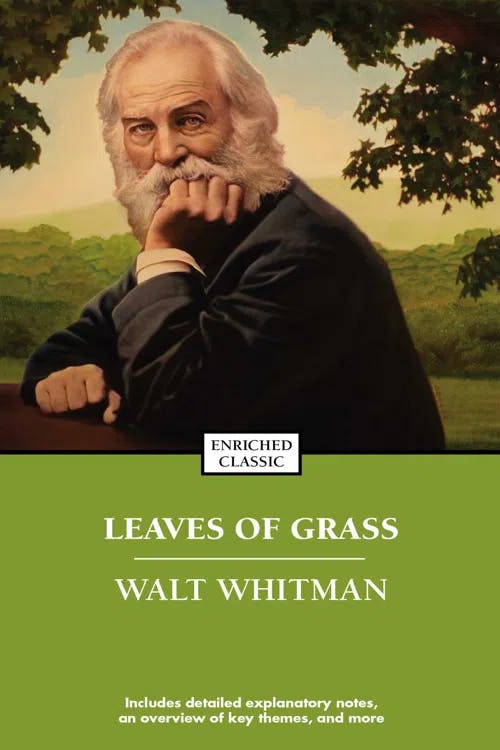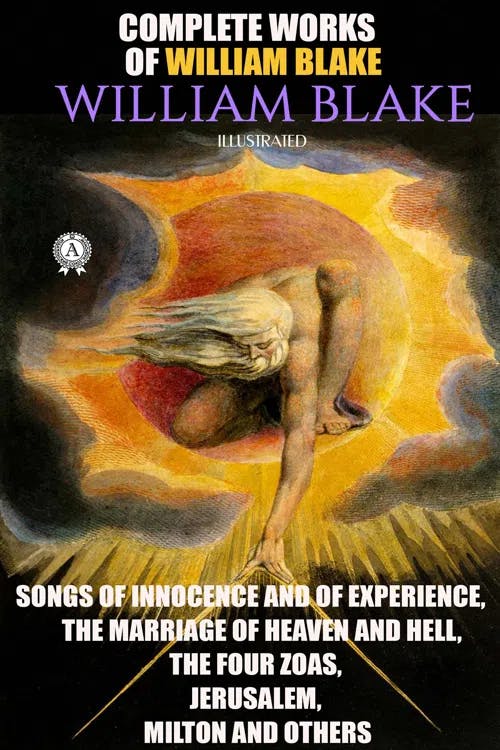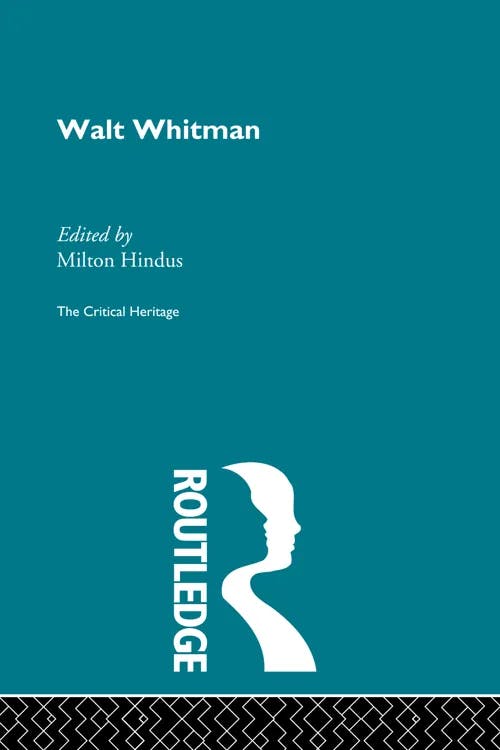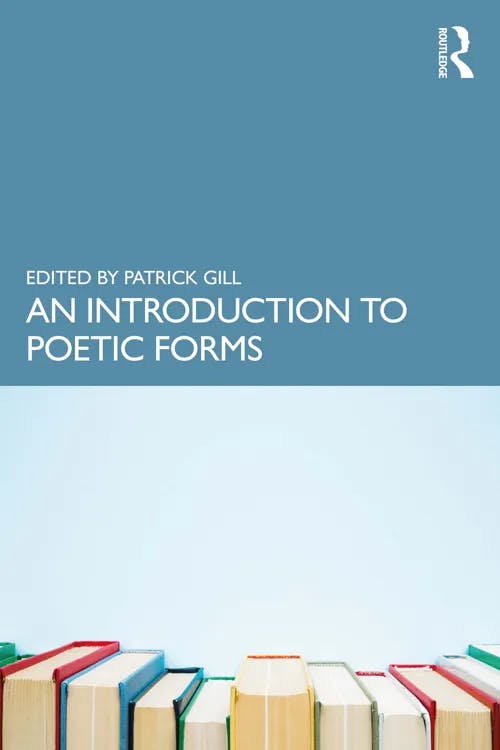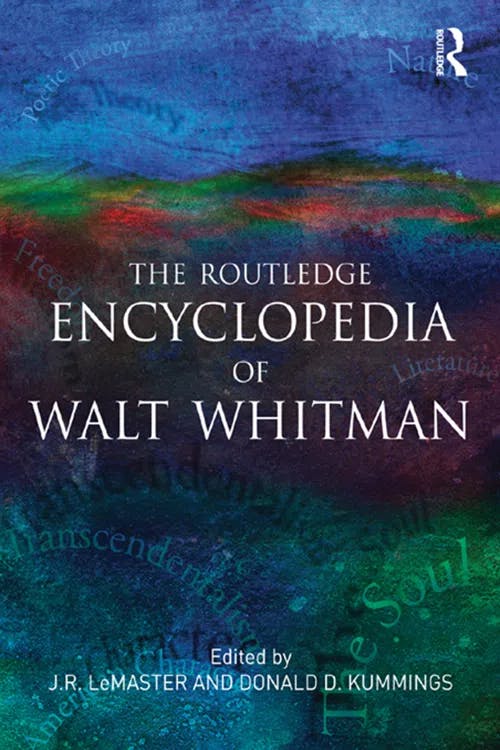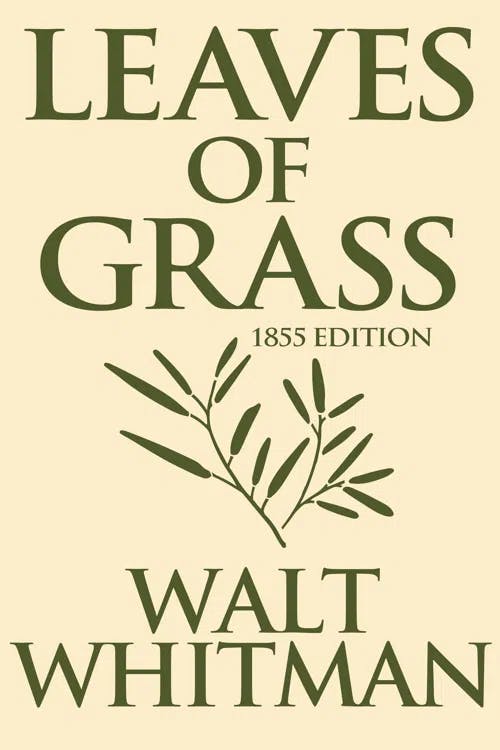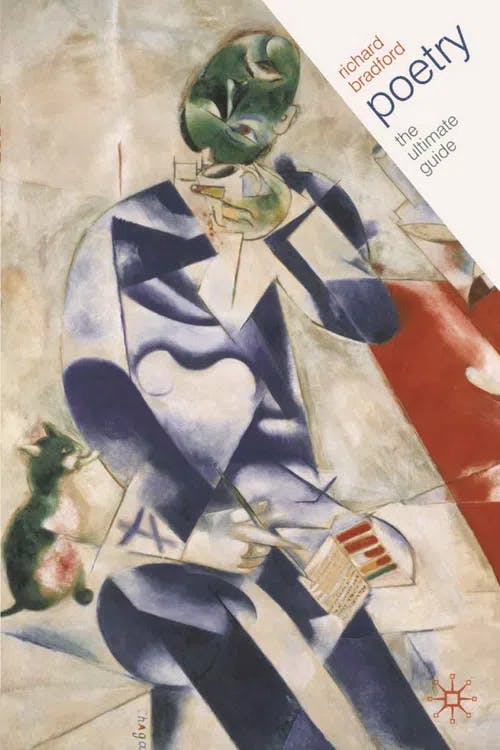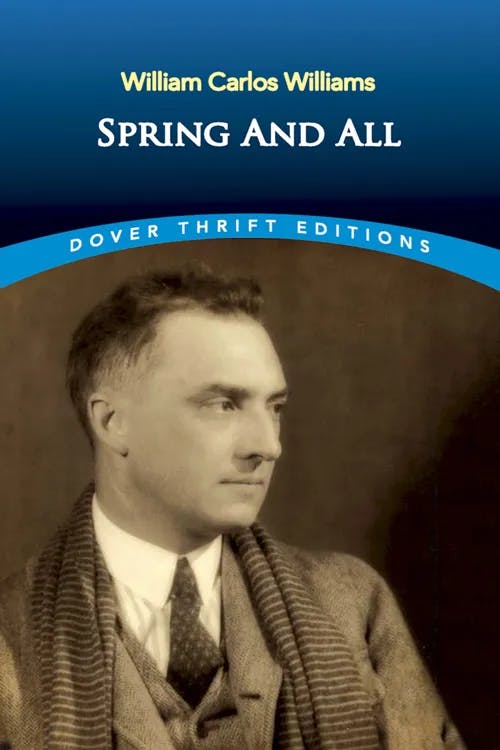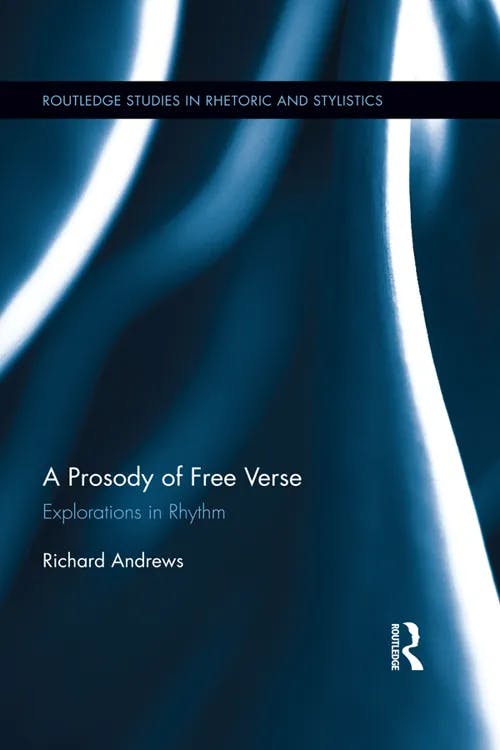What is Free Verse?
MA, English Literature (University College London)
Date Published: 22.11.2023,
Last Updated: 01.02.2024
Share this article
Defining free verse
Free verse, in a basic sense, can be defined as a form of poetry that is “free” from the need to subscribe to a particular rhyme scheme and/or meter. Free verse is often regarded as a kind of democratization of poetry; freeing it from perceived elitism, and making room for more colloquial and authentic expressions of the human experience. As Jeffrey Wainwright summarizes,
The general movement of ‘free verse’ then is towards a democratic informality that has a more flexible rhythm and a wider, more colloquial, range of words. (2015)
Jeffrey Wainwright
The general movement of ‘free verse’ then is towards a democratic informality that has a more flexible rhythm and a wider, more colloquial, range of words. (2015)
Although there are examples of free verse from much earlier in history, including the Bible and ancient Greek and Roman poets, as a definable poetic movement free verse is generally considered to have arisen in the 19th and 20th centuries. Free verse has now become the most popular form of poetry, and a huge number of diverse poems can technically be identified with this umbrella term.
Although free verse does not follow a set scheme of rhyme and meter, this does not mean that it is the same as prose: free verse still employs many poetic techniques, even if it does so in a less uniform manner. Free verse’s continued use of “the poetic line” is often highlighted as a key point which distinguishes it from prose — it still “looks” like a poem on the page, with carefully selected line breaks which differentiate it from the solid blocks which usually characterize prose (the precise difference between the two is still a matter of debate, however). As a brief example of this, we can look at the famous free verse of Walt Whitman (1819–1892). The lines here are varied in length, and move according to their own irregular rhythm and meter:
I depart as air, I shake my white locks at the runaway sun,
I effuse my flesh in eddies, and drift it in lacy jags.
I bequeath myself to the dirt to grow from the grass I love,
If you want me again look for me under your boot-soles.
You will hardly know who I am or what I mean,
But I shall be good health to you nevertheless,
And filter and fibre your blood.
Failing to fetch me at first keep encouraged,
Missing me one place search another,
I stop somewhere waiting for you.
(“Song of Myself,” Leaves of Grass, 1891–92, [2006])
Walt Whitman
I depart as air, I shake my white locks at the runaway sun,
I effuse my flesh in eddies, and drift it in lacy jags.
I bequeath myself to the dirt to grow from the grass I love,
If you want me again look for me under your boot-soles.
You will hardly know who I am or what I mean,
But I shall be good health to you nevertheless,
And filter and fibre your blood.
Failing to fetch me at first keep encouraged,
Missing me one place search another,
I stop somewhere waiting for you.
(“Song of Myself,” Leaves of Grass, 1891–92, [2006])
We will see more of Whitman in the following guide, and dig deeper into the topic of free verse — exploring its key features, and considering the question: is free verse actually “free” at all?
Unpacking free verse
As we have already touched upon, there are examples of poems which do not follow set rules of rhyme and meter throughout history. Roughly speaking, however, it is only within the last couple of centuries that free verse began to develop into the popular form which continues to flourish to this day. In the following section, we will highlight just a few of free verse’s influential figures and movements.
William Blake (1757–1827)
William Blake is considered to be one of the earliest major proponents of English free verse. In “To the Public,” Jerusalem: The Emanation of the Giant Albion (1804–1820), Blake makes a memorable argument for the value of free verse and explains why he is departing from blank verse, which had been the dominant form for centuries:
I consider’d a Monotonous Cadence like that used by Milton & Shakespeare & all writers of English Blank Verse, derived from the modern bondage of Rhyming; to be a necessary and indispensable part of Verse. But I soon found that in the mouth of a true Orator such monotony was not only awkward, but as much a bondage as rhyme itself. I therefore have produced a variety in every line, both of cadences & number of syllables. Every word and every letter is studied and put into its fit place: the terrific numbers are reserved for the terrific parts – the mild & gentle, for the mild & gentle parts, and the prosaic, for inferior parts: all are necessary to each other. Poetry Fetter’d, Fetters the Human Race! (1804–1820, [2021])
William Blake
I consider’d a Monotonous Cadence like that used by Milton & Shakespeare & all writers of English Blank Verse, derived from the modern bondage of Rhyming; to be a necessary and indispensable part of Verse. But I soon found that in the mouth of a true Orator such monotony was not only awkward, but as much a bondage as rhyme itself. I therefore have produced a variety in every line, both of cadences & number of syllables. Every word and every letter is studied and put into its fit place: the terrific numbers are reserved for the terrific parts – the mild & gentle, for the mild & gentle parts, and the prosaic, for inferior parts: all are necessary to each other. Poetry Fetter’d, Fetters the Human Race! (1804–1820, [2021])
Although blank verse does not rhyme, Blake feels creatively restricted by the iambic pentameter it generally follows. Here, then, Blake argues for a less monotonous form of verse that possesses “variety in every line” and a flexible meter which adapts itself to the subject matter. Just as with later proponents of free verse, Blake also makes a connection between the freedom of poetry and the freedom of humanity itself.
As Wainwright explains, biblical verse was a key influence on Blake’s free verse, both in form and content — giving him the “amplitude” his imagination demanded, as well as a free “form closer to popular knowledge” (2015):
After all, in the eighteenth century, the Bible was heard and read in churches, chapels and homes daily and weekly and would be far more widely familiar than the couplets of famous London poets of the period such as Alexander Pope. (2015)
Although much of Blake’s poetry is written with a more regular meter, his use of free verse can be notably seen in such works as The Marriage of Heaven and Hell (1790–93, [2014]) and Jerusalem: The Emanation of the Giant Albion (1804–1820, [2021]). Blake is renowned for his eccentricity, as well as the visionary nature of his art and poetry. This free spirit is mirrored in the way he broke free of poetic rules in search of his own individualistic modes of expression.
Walt Whitman (1819–1892)
Walt Whitman is one of the most popular and influential free verse poets in history. In the words of Carl Martin Lindner, “Whitman’s freer verse powerfully influenced the course of Western poetry, and he still remains its most impressive practitioner” (“Freedom,” in The Routledge Encyclopedia of Walt Whitman, 2013).
First published in 1855, before being updated and expanded throughout his life, Whitman’s collection Leaves of Grass represented a radical departure from prevailing poetic norms. One contemporary review of the first edition, for example, has this to say:
The poems, twelve in number, are neither in rhyme nor blank verse, but in a sort of excited prose broken into lines without any attempt at measure or regularity, and, as many readers will perhaps think, without any idea of sense or reason. The writer’s scorn for the wonted usages of good writing extends to the vocabulary he adopts; words usually banished from polite society are here employed without reserve and with perfect indifference to their effect on the reader’s mind [...]. (Charles Eliot Norton, 1855, in Walt Whitman, 2014)
Edited by Milton Hindus
The poems, twelve in number, are neither in rhyme nor blank verse, but in a sort of excited prose broken into lines without any attempt at measure or regularity, and, as many readers will perhaps think, without any idea of sense or reason. The writer’s scorn for the wonted usages of good writing extends to the vocabulary he adopts; words usually banished from polite society are here employed without reserve and with perfect indifference to their effect on the reader’s mind [...]. (Charles Eliot Norton, 1855, in Walt Whitman, 2014)
Whitman’s employment of free verse, colloquial language, and taboo subject matter were all part of his quest for artistic freedom and authenticity. As Whitman writes in his preface to the 1855 edition of Leaves of Grass, “The cleanest expression is that which finds no sphere worthy of itself and makes one” (1855, [2016]). With his free verse, Whitman created a new and artistically liberating sphere in which he could express himself fully — free of the stultifying rules, expectations, and attitudes of what had gone before. Rather than seeking to fit his poems to existing forms, “Each poem had its own form to find, and that form would emerge in the writing of the poem” (Lindner, 2013). Andrew Rowcroft explains that
For Whitman, there was simply no way a sonnet could adequately capture the immense scope, diversity, and ambition of America. Free verse, then, was more adequate to this endeavour, as it did not require fitting the world as Whitman saw it into a metrical form. (Rowcroft, “Free Verse,” in An Introduction to Poetic Forms, 2022)
Edited by Patrick Gill
For Whitman, there was simply no way a sonnet could adequately capture the immense scope, diversity, and ambition of America. Free verse, then, was more adequate to this endeavour, as it did not require fitting the world as Whitman saw it into a metrical form. (Rowcroft, “Free Verse,” in An Introduction to Poetic Forms, 2022)
The freedom of the verse itself reflected its subject matter and Whitman’s wider worldview: “Freedom is central to Whitman’s vision of life—the artistic life, the individual life, and the life of the society” (Lindner, 2013). Lindner continues:
Ultimately, Whitman’s vision of individual freedom (including artistic freedom) culminates in his hope for a truly democratic society. In such a culture, people are equal, unique, and free to become themselves. [...] In Whitman’s dream of America, all people are equal (men and women, poor and rich, black and white, professor and mechanic, Christian and non-Christian), all have maximum opportunity for self-development resulting in distinct and fully realized identities (individuation), and all share in the culture’s life. (Lindner, “Freedom,” in The Routledge Encyclopedia of Walt Whitman, 2013)
Edited by J.R. LeMaster and Donald D. Kummings
Ultimately, Whitman’s vision of individual freedom (including artistic freedom) culminates in his hope for a truly democratic society. In such a culture, people are equal, unique, and free to become themselves. [...] In Whitman’s dream of America, all people are equal (men and women, poor and rich, black and white, professor and mechanic, Christian and non-Christian), all have maximum opportunity for self-development resulting in distinct and fully realized identities (individuation), and all share in the culture’s life. (Lindner, “Freedom,” in The Routledge Encyclopedia of Walt Whitman, 2013)
Whitman advocated for a free society in which all are equal, and his poetry reflects this approach — through its form, subject matter, and use of colloquial language. Whitman depicted people from all walks of life in his free verse, and he did so in the kind of language they would have used themselves. As Lindner observes, Whitman’s poem “Song of Myself” “most fully expresses this vision,” with sections 15 and 33 parading “an extraordinary and representative variety of individuals going about their business in this new country” (2013). Let’s take a look at this extract from section 15, for example:
The prostitute draggles her shawl, her bonnet bobs on her tipsy and pimpled neck,
The crowd laugh at her blackguard oaths, the men jeer and wink to each other,
(Miserable! I do not laugh at your oaths nor jeer you;)
The President holding a cabinet council is surrounded by the great Secretaries,
On the piazza walk three matrons stately and friendly with twined arms,
The crew of the fish-smack pack repeated layers of halibut in the hold [...].
(Whitman, “Song of Myself,” Leaves of Grass, 1891–92, [2006])
Walt Whitman
The prostitute draggles her shawl, her bonnet bobs on her tipsy and pimpled neck,
The crowd laugh at her blackguard oaths, the men jeer and wink to each other,
(Miserable! I do not laugh at your oaths nor jeer you;)
The President holding a cabinet council is surrounded by the great Secretaries,
On the piazza walk three matrons stately and friendly with twined arms,
The crew of the fish-smack pack repeated layers of halibut in the hold [...].
(Whitman, “Song of Myself,” Leaves of Grass, 1891–92, [2006])
In only a few lines here, Whitman includes a roll call of societal figures from the richest to the poorest, and empathizes with a prostitute while inclusively addressing her in person. Whitman goes on to explain that he sees each other person as an extended part of himself: “these tend inward to me, and I tend outward to them / [...] And of these one and all I weave the song of myself” (1891–92), [2006]). As Whitman writes in his preface to the 1855 edition of Leaves of Grass,
The messages of great poets to each man and woman are, Come to us on equal terms, Only then can you understand us, We are no better than you, What we enclose you enclose, What we enjoy you may enjoy. (1855, [2016])
Walt Whitman
The messages of great poets to each man and woman are, Come to us on equal terms, Only then can you understand us, We are no better than you, What we enclose you enclose, What we enjoy you may enjoy. (1855, [2016])
Through his free verse, Whitman wants to meet his readers on equal, intimate terms, and share with them his unvarnished self:
I [...] will not have in my writing any elegance or effect or originality to hang in the way between me and the rest like curtains. I will have nothing hang in the way, not the richest curtains. What I tell I tell for precisely what it is. [...] What I experience or portray shall go from my composition without a shred of my composition. You shall stand by my side and look in the mirror with me. (1855, [2016])
Whitman has found many readers to “look in the mirror” with him in the centuries since then. Although his influence has been felt across the world, he has become particularly iconic in the United States of America. As Charles Brower observes, Leaves of Grass is “Probably the most famous book of American poetry ever written,” and
No poet before him was so wholly American, so committed to celebrating American democracy and identity. For this reason, Whitman can be classed as the first truly great American poet, an artist who sprang off a platform of European poetic models and soared into new territory. And no American poet after Whitman could claim to be entirely free of his influence. Echoes of Whitman appear in the poems of generation after generation of writers—from the bleakest of Modernists in the post–World War I era, to the stars of the Harlem Renaissance in the 1920s, to the hippest of Beat and Confessional poets in the 1950s and 1960s. (Brower, “Introduction,” Leaves of Grass, 1891–92, [2006])
With his free, colloquial verse, Whitman pushed boundaries and left a lasting influence on free verse and literature in general — with many lauding him as the voice of America itself.
Vers libre
In the late nineteenth century, free verse began to gather even more momentum with the vers libre movement in France (vers libre is literally translated as free verse). As Wainwright notes, vers libre did not develop in a vacuum: “French poetry, most obviously in the prose poems of Charles Baudelaire (1821–67) and Arthur Rimbaud (1854–91), had been seeking its own departures from formal verse” (2015). Symbolist poets Gustave Kahn (1859–1936) and Jules Laforgue (1860–87) are regarded as key foundational figures, and vers libre quickly grew. In 1891, fellow poet Stéphane Mallarmé (1842–98) writes that:
We are now witnessing a spectacle which is truly extraordinary, unique in the history of poetry: every poet is going off by himself with his own flute, and playing the songs he pleases. For the first time since the beginning of poetry, poets have stopped singing bass. Hitherto … if they wished to be accompanied, they had to be content with the great organ of official metre. (Quoted by Wainwright, 2015)
Modernism and imagism
Drawing upon all of the above influences and more, modernist poetry of the early twentieth century developed free verse into an increasingly popular and coherent form. Richard Bradford argues that “It was not until the 20th century that free verse became an established part of the formal repertoire of English poetry” (Poetry: The Ultimate Guide, 2010). T.S. Eliot (1888–1965), Ezra Pound (1885–1972), and William Carlos Williams (1883–1963) are key figures here, along with many others. Referencing the three poets above, Bradford explains that, although it can sometimes be difficult to confidently designate a particular poem as an example of free verse,
with Williams’ ‘The Red Wheelbarrow’, Pound’s ‘In a Station of the Metro’ or Eliot’s ‘Ash Wednesday’, we can agree to designate all three as free verse only because they persistently evade the abstract patterns of regular verse. We know what they are because of what they are not. (2010)
Richard Bradford
with Williams’ ‘The Red Wheelbarrow’, Pound’s ‘In a Station of the Metro’ or Eliot’s ‘Ash Wednesday’, we can agree to designate all three as free verse only because they persistently evade the abstract patterns of regular verse. We know what they are because of what they are not. (2010)
Pound, Williams, and other poets of the time such as H.D. (1886–1961), were all members of the imagist movement, which developed in a rich crucible of modernist and avant-garde experimentation in the early twentieth century (cubism, surrealism, dadaism, and futurism are other notable examples). The use of free verse was a central component of the imagist philosophy: to present clear, resonant images in a free and unhindered form. Amy Lowell (1874–1925) is another major imagist poet, and the editor of influential imagist anthologies. In her preface to Some Imagist Poets (1915), Lowell identifies free verse in her list of “the essentials of all great poetry”:
To create new rhythms—as the expression of new moods—and not to copy old rhythms, which merely echo old moods. We do not insist upon “free-verse” as the only method of writing poetry. We fight for it as a principle of liberty. We believe that the individuality of a poet may often be better expressed in free-verse than in conventional forms. In poetry, a new cadence is a new idea. (1915, [2009])
Edited by H.D. et al.
To create new rhythms—as the expression of new moods—and not to copy old rhythms, which merely echo old moods. We do not insist upon “free-verse” as the only method of writing poetry. We fight for it as a principle of liberty. We believe that the individuality of a poet may often be better expressed in free-verse than in conventional forms. In poetry, a new cadence is a new idea. (1915, [2009])
One of the most famous examples of one such imagist, free verse poem is William Carlos Williams’ “The Red Wheelbarrow” (although it has become known by this title, it was only assigned the numerical title “XXII” when it was originally published in Spring and All [1923]). The poem is so short that we can include it here in full:
so much depends
upon
a red wheel
barrow
glazed with rain
water
beside the white
chickens
(1923, [2019])
William Carlos Williams
so much depends
upon
a red wheel
barrow
glazed with rain
water
beside the white
chickens
(1923, [2019])
The poem has been the subject of keen debate — what does the image represent, if anything? Why does so much depend on the red wheelbarrow? Is the poem meant to represent the salience of everyday images and/or lived experience in general? Or something else? Here, the empty space is arguably as important as the words that are actually there — what is being left unsaid by the poem’s sparse, meditative, economical free verse?
The poetry of Williams and other imagists is at the minimalist end of the free verse spectrum, but it is important to stress that free verse does not have to be minimalist. As Wainwright argues, the poetry of Frank O’Hara (1926–1966) is a later example of free verse in a maximalist, expansionist mode: “[O’Hara] shares the modernist fear of the pretentiously ‘poetic’, but rather than trying to pare it away he seeks to bury it by being talkative and exuberant” (2015). Wainwright highlights poems such as “Les Luths,” appearing in 1965’s Love Poems (Tentative Title), which thrums with O’Hara’s witty everyday language while, at the same time, reflecting on that most traditional and serious of poetic subjects: love.
Criticism of free verse
Is free verse truly free, or does it simply work under a different set of constraints? Bradford points out that “Even those poets who reject rhyme and meter retain in free verse the unit that is the distinctive feature of poems: the poetic line” (2010). As well as the poetic line, poets (arguably) still have to consider such matters as stress, language choice, and rhythm in order to achieve the effects they want. As T.S. Eliot noted, “No verse is free for the man who wants to do a good job” (quoted by Charles O. Hartman in Verse, 2015).
It could be argued, then, that the effective and powerful use of the English language requires some kind of restriction on its use — that no well-crafted poetry can ever be truly free. In a similar vein to T.S. Eliot, Robert Frost famously compared free verse to playing tennis without a net (W.M. Thomas Hill, “Sandburg, Carl,” in The Robert Frost Encyclopedia, 2000).
Some poets might argue, though, that such apparent restrictions as “the poetic line” are actually, in their own way, liberating; freeing their poetry to more accurately mimic the chaos of human thought in a way that is not possible with prose, and opening up new imaginative avenues. Together with the freedom to ignore meter and rhyme, free verse (though still following the poetic line) may arguably be seen as the most liberating form of expression.
While some argue that the rules of traditional poetic form are necessary in order to produce effective poetry, others argue that such constraints hold poetry back — that free verse releases poetry’s full creative potential. Wainwright, for example, makes the case that “Free verse of course does not do away with rhythm. What it does do is bring in the opportunity for very particular, intuitive variation, Blake’s ‘variety in every line’” (2015).
Closing thoughts: free verse today
Wherever you might stand on the free verse debate, there is no arguing with its influential legacy. Free verse has been the most popular form of poetry since the 20th century — eclipsing previous historical titans such as blank verse, and employed by popular poets such as Seamus Heaney (1939–2013) and Maya Angelou (1928–2014). Free verse continues to flourish today, all across the world. As Richard Andrews argues,
The wide range of free verse forms used in world poetry suggests that although each culture has its own formal and metrical verse forms, free verse is the norm. Whereas at the start of the 20th century, in the Euro-American tradition at least, the default forms were metrically based, the turning points of the first 20 years of that century (or the last 20 years of the 19th century in France) marked not just a temporary aberration and an experimental excursion into free verse but a key moment in poetic history. Whereas metrical verse forms were the norm and free verse a matter of choice, now the reverse is the case. (2016)
Richard Andrews
The wide range of free verse forms used in world poetry suggests that although each culture has its own formal and metrical verse forms, free verse is the norm. Whereas at the start of the 20th century, in the Euro-American tradition at least, the default forms were metrically based, the turning points of the first 20 years of that century (or the last 20 years of the 19th century in France) marked not just a temporary aberration and an experimental excursion into free verse but a key moment in poetic history. Whereas metrical verse forms were the norm and free verse a matter of choice, now the reverse is the case. (2016)
The rich body of postcolonial poetry provides just one example of free verse’s centrality in modern times. Andrews notes that poets such as Derek Walcott (1930–2017) tend to “eschew the conventional metrical forms for free verse forms” as they search for a new voice:
It is as if the finding of a distinctive voice needs also to find new rhythms and new poetic structures, partly by reference to or in opposition to those of the ‘old countries’ and partly by capturing and developing local speech and/or song rhythms. (2016)
This short guide has selected only a few highlights from the vast body of free verse that exists: for a more detailed exploration of free verse and its place in poetic history, please refer to our further reading section below.
Further reading on Perlego
Contemporary Poetry (2011) by Nerys Williams
Theorists of Modernist Poetry (2007) by Rebecca Beasley
Modernism (2016) by Peter Childs
Modernism: Evolution of an Idea (2015) by Sean Latham and Gayle Rogers
Metre, Rhyme and Free Verse (2017) by G.S. Fraser
The Situation of Poetry (2020) by Robert Pinsky
The Poetry Toolkit: The Essential Guide to Studying Poetry (2013) by Rhian Williams
What is free verse in simple terms?
Who are some free verse poets?
What are the best books on free verse?
Bibliography
Andrews, R. (2016) A Prosody of Free Verse. Taylor and Francis. Available at: https://www.perlego.com/book/1635405/a-prosody-of-free-verse-explorations-in-rhythm-pdf
Blake, W. (2014) The Marriage of Heaven and Hell. The Floating Press. Available at: https://www.perlego.com/book/1278524/marriage-of-heaven-and-hell-pdf
Blake, W. (2021) Complete Works of William Blake. Strelbytskyy Multimedia Publishing. Available at: https://www.perlego.com/book/2704120/complete-works-of-william-blake-illustrated-songs-of-innocence-and-of-experience-the-marriage-of-heaven-and-hell-the-four-zoas-jerusalem-milton-and-others-pdf
Bradford, R. (2010) Poetry: The Ultimate Guide. Bloomsbury Publishing. Available at: https://www.perlego.com/book/2997554/poetry-the-ultimate-guide-pdf
Bruns, G. (2007) On the Anarchy of Poetry and Philosophy : A Guide for the Unruly. Fordham University Press. Available at: https://www.perlego.com/book/2329995/on-the-anarchy-of-poetry-and-philosophy-a-guide-for-the-unruly-pdf
Hartman, C. (2015) Verse. Wiley. Available at: https://www.perlego.com/book/998390/verse-an-introduction-to-prosody-pdf
Hindus, M. (ed.) (2014) Walt Whitman. Taylor and Francis. Available at: https://www.perlego.com/book/1662617/walt-whitman-pdf
LeMaster, J. R. and Kummings, D. D. (eds.) (2013) The Routledge Encyclopedia of Walt Whitman. Taylor and Francis. Available at: https://www.perlego.com/book/1676942/the-routledge-encyclopedia-of-walt-whitman-pdf
Lowell, A. (2009) “Preface,” in H.D. et al. (eds.) Some Imagist Poets. Perlego. Available at: https://www.perlego.com/book/1825880/some-imagist-poets-an-anthology-pdf
Robertson, M. (2021) Worshipping Walt. Princeton University Press. Available at: https://www.perlego.com/book/2629268/worshipping-walt-the-whitman-disciples-pdf
Rowcroft, A. (2022) “Free Verse,” in Gill, P. (ed.) An Introduction to Poetic Forms. Taylor and Francis. Available at: https://www.perlego.com/book/3804911/an-introduction-to-poetic-forms-pdf
Tuten, N. and Zubizarreta, J. (eds.) (2000) The Robert Frost Encyclopedia. Bloomsbury Publishing. Available at: https://www.perlego.com/book/4173871/the-robert-frost-encyclopedia-pdf
Wainwright, J. (2015) Poetry: The Basics. 3rd edn. Taylor and Francis. Available at: https://www.perlego.com/book/1563374/poetry-the-basics-pdf
Williams, W. C. (2019) Spring and All. Dover Publications. Available at: https://www.perlego.com/book/970817/spring-and-all-pdf
Whitman, W. (2006) Leaves of Grass. Simon & Schuster. Available at: https://www.perlego.com/book/780435/leaves-of-grass-pdf
Whitman, W. (2016) Leaves of Grass: 1855 Edition. Dreamscape Media. Available at: https://www.perlego.com/book/650227/leaves-of-grass-1855-edition-pdf
Whitman, W. and Nemo, A. (ed.) (2020) Masters of Poetry - Walt Whitman. Tacet Books. Available at: https://www.perlego.com/book/1903042/masters-of-poetry-walt-whitman-pdf
Whitworth, M. (2010) Reading Modernist Poetry. Wiley. Available at: https://www.perlego.com/book/2774078/reading-modernist-poetry-pdf
Xie, M. (2015) Ezra Pound and the Appropriation of Chinese Poetry. Taylor and Francis. Available at: https://www.perlego.com/book/1644228/ezra-pound-and-the-appropriation-of-chinese-poetry-cathay-translation-and-imagism-pdf
MA, English Literature (University College London)
Andy Cain has an MA in English Literature from University College London, and a BA in English and Creative Writing from Royal Holloway, University of London. His particular research interests include science fiction, fantasy, and the philosophy of art. For his MA dissertation, he explored the presence of the sublime in Shakespeare’s plays.

